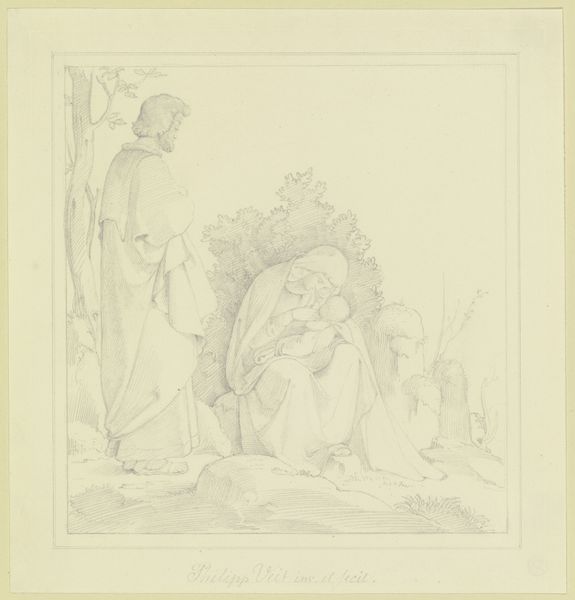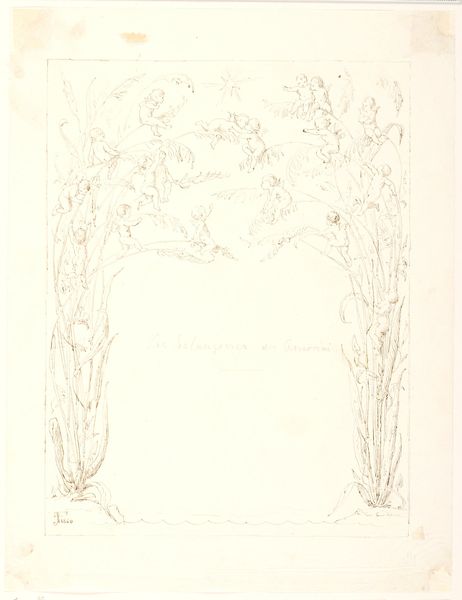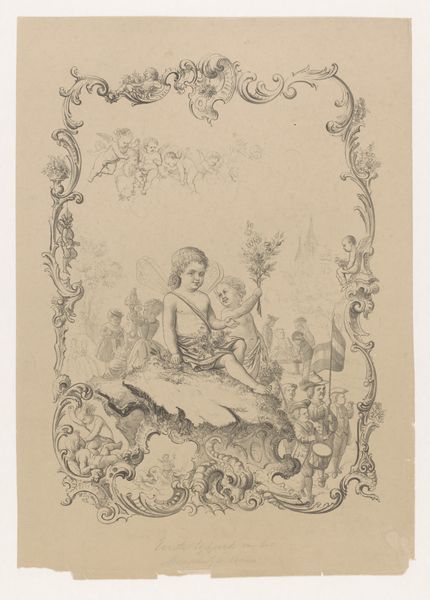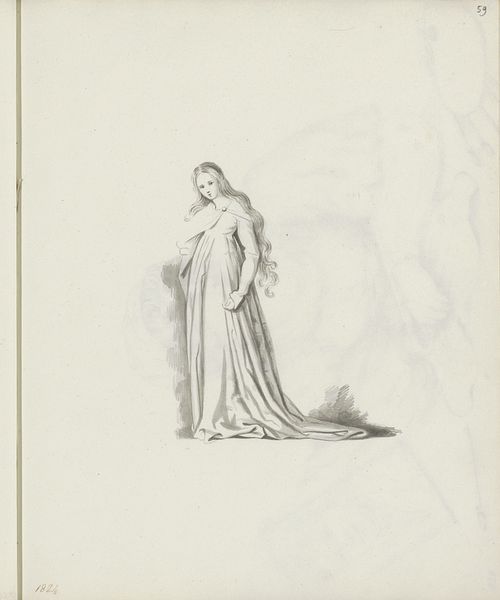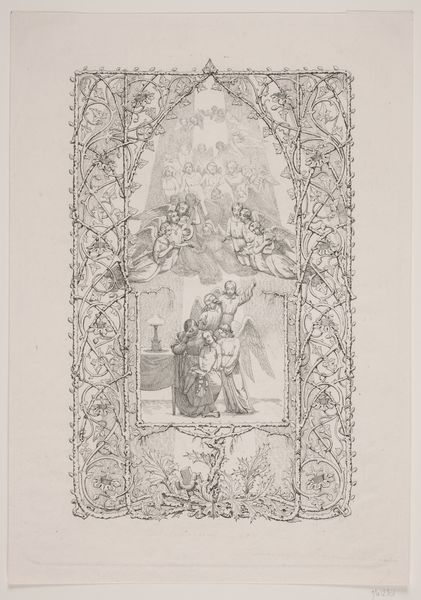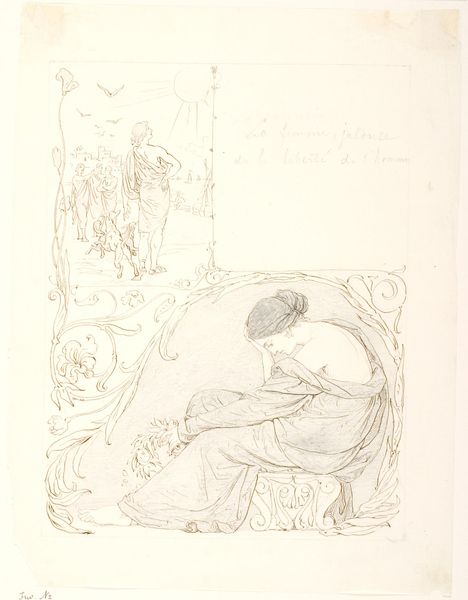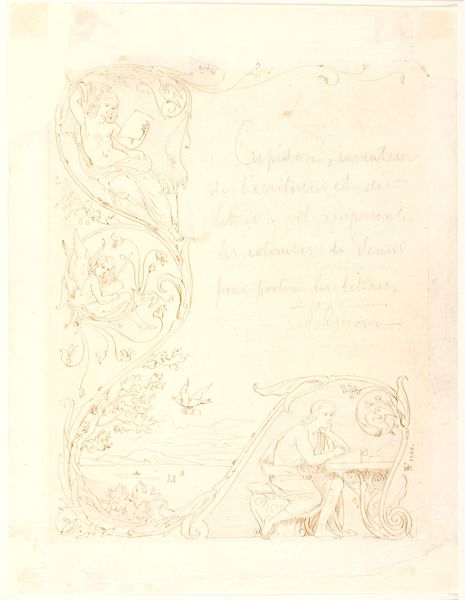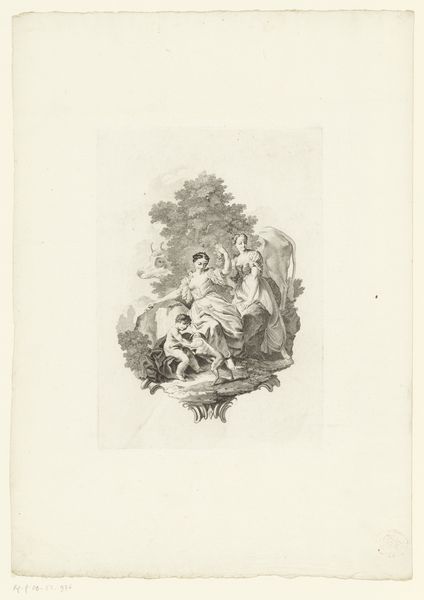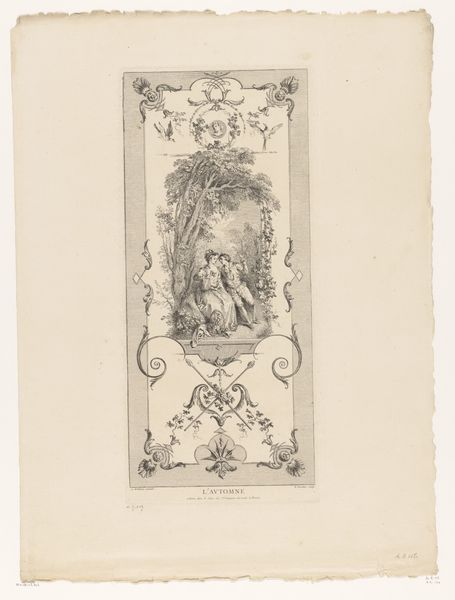
drawing, ink, pen
#
drawing
#
pen sketch
#
pencil sketch
#
landscape
#
etching
#
figuration
#
ink
#
ink drawing experimentation
#
pen-ink sketch
#
line
#
pen work
#
pen
#
history-painting
#
academic-art
Dimensions: 271 mm (height) x 207 mm (width) (bladmaal)
Editor: This is Lorenz Frølich's 1860 pen and ink drawing, "Nymphs Find Eros Sleeping." It’s delicate, almost ethereal. The sleeping figure of Eros has a definite vulnerability about it. What do you see in this piece, especially considering the context of its time? Curator: This drawing resonates deeply when viewed through a feminist lens, particularly in its depiction of Eros, typically a symbol of virility, in a state of repose, vulnerable and observed by the nymphs. Frølich, intentionally or not, subverts traditional power dynamics. The male figure, usually the active agent, becomes passive, feminized almost, within a composition framed by the female gaze and the feminine symbol of nature. Editor: That's a really interesting take! I hadn’t thought of the passivity in that way. Does the period have anything to do with that perspective? Curator: Absolutely. 1860 was a period of considerable social upheaval. Questions surrounding gender roles were bubbling beneath the surface. This work might subtly critique the expected dominance of the masculine, presenting an alternative vision where vulnerability and tenderness are centered, rather than overt power. Notice how the nymphs aren’t predatory but appear almost nurturing. How might we view it in comparison to contemporaneous works? Editor: Perhaps Frølich is offering a softer, more nuanced commentary on relationships between genders than what was normally being offered in academic art? Curator: Precisely. Considering the historical narrative and prevailing societal structures adds another dimension to appreciating the choices Frølich made. Editor: This really highlights how art can be so much more than what appears on the surface, reflecting and questioning social norms. Thank you. Curator: Indeed. By engaging with the social and historical contexts, we unlock richer understandings.
Comments
No comments
Be the first to comment and join the conversation on the ultimate creative platform.

